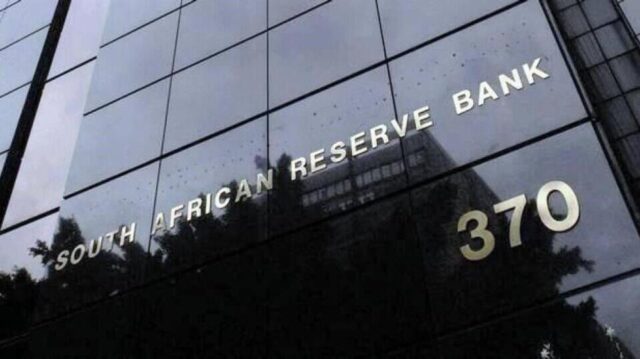However, economists have warned that consumer price inflation (CPI) risks were to the upside, including potential rand weakness, rising food prices and the global shipping crisis.
CONSUMER prices in South Africa have been forecast to average around the midpoint of the SA Reserve Bank (SARB) target range for the first time since 2021, on the back of slowing global oil prices that could also result in easing interest rates.
However, economists have warned that consumer price inflation (CPI) risks were to the upside, including potential rand weakness, rising food prices and the global shipping crisis.
Headline inflation in 2023 remained above the 4.5% midpoint of the inflation target range as a result of volatility in fuel prices, the impact of severe rotational load shedding and logistical challenges at South Africa’s ports later in the year.
But the petrol price fell by 76 cents a litre this week and diesel by R1.18c/litre, after falling by 64c/litre and R1.35/litre respectively in December, with further modest fuel cuts building for February that will detract from inflationary pressures in those months.
Investec chief economist Annabel Bishop said on Friday that headline inflation was currently likely to come out at 4.5% year-on-year, although this average could face upside risks, potentially from food prices, a weaker rand and higher global commodity prices.
Bishop said they were currently forecasting that CPI inflation would reach 4.5% year-on-year in July this year, dipping to 3.4% in October and moving back towards 4.0% in December on base effects, although the upside risks mentioned could derail this outcome.
However, Bishop said the SARB’s Monetary Policy Committee (MPC) would likely favourably view rand strength in order to drive inflation lower given the marked weakness in the rand, which has contributed significantly to higher inflation.
“Fuel prices are key for South Africa’s inflation outcomes, and November’s large R1.78/litre cut in the petrol price helped pull inflation down to 5.5% in November, from 5.9% in October, and December’s 64c/litre cut should aid it lower, to around 5.2%,” Bishop said.
“While inflation is likely to temporarily return to around 5.8% in January’s outcome for this year, it should drop to near 5.3% in February, and 4.7% in March, as an overall downwards trend is maintained, allowing for interest rates cuts this year.
“A substantially stronger rand would aid in greater petrol price cuts, as well as exerting some downwards pressure on food price inflation, along with other commodity price inflation rates. A weaker rand remains a key risk to SA’s inflation this year.”
While the risk of an El Niño year has been muted in South Africa, adverse weather conditions remain a risk for inflation in 2024 and could push up food price inflation.
A new risk to global consumer prices has emerged with the recent wave of attacks on ships sailing through the Red Sea, through which about 30% of all container shipping traffic passes.
Some shipping companies have already announced suspensions of sailing though the region, diverting ships instead around the Cape of Good Hope.
The reduction in shipping capacity along with higher fuel and insurance costs has led to a 200% rise in the cost of shipping containers on routes that would typically pass through the Red Sea.
Oxford Economics Africa’s director of global macro research Ben May said the attacks had major ramifications for the shipping industry and added to global inflation risks.
May said they assumed the disruption to shipping caused by maritime attacks on commercial vessels in the Red Sea would be relatively short-lived and the recent spike in sea freight prices would reverse.
He said while there would be near-term impacts for some firms and sectors, these won’t be enough to shift their baseline economic or inflation forecasts to any meaningful extent.
“If the Red Sea were to remain closed to shipping for several months, however, and shipping freight costs stayed around twice the level of mid-December, this could add 0.7 percentage points to annual CPI inflation rates by the end of 2024,” May said.
“Still, the inflation push from this scenario wouldn’t be enough to stop world inflation from slowing over the course of this year and we doubt it would prevent the US Federal Reserve and other major central banks from pivoting to rate cuts by around mid-2024. It would, however, be another reason to believe that the rate cuts priced in by markets have gone too far.”
– BUSINESS REPORT








